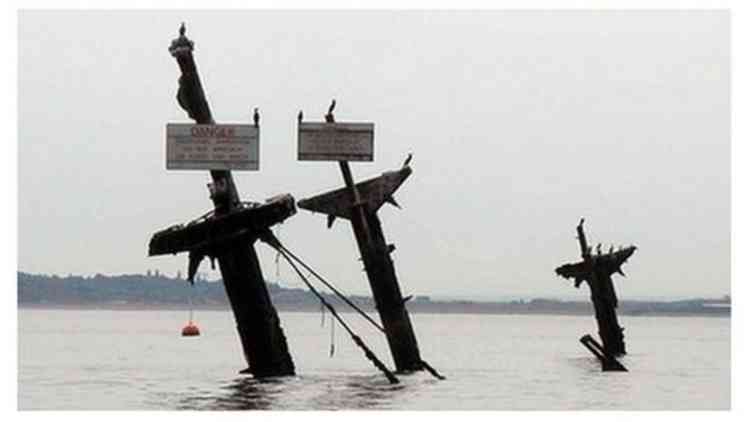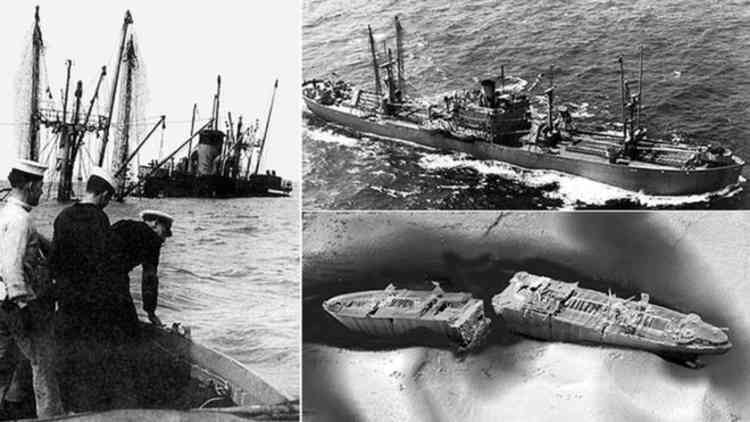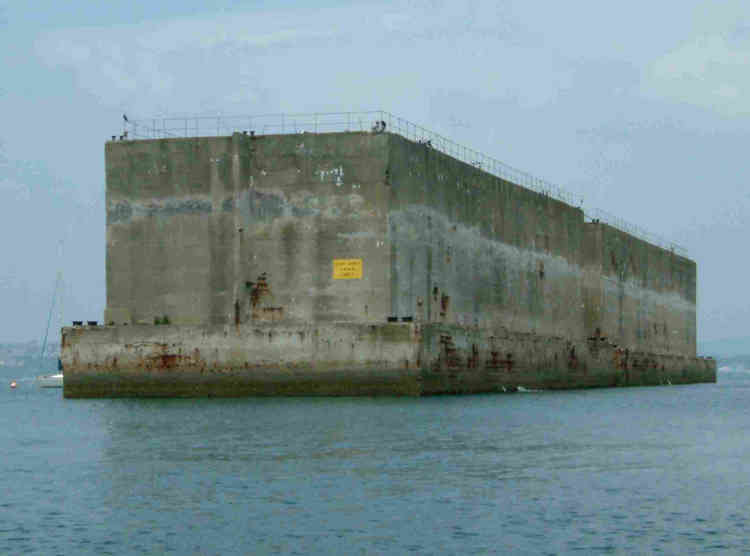Wrecks on the river and the tale of a floating harbour that broke its back
By Guest
2nd Aug 2020 | Local News



The chair of Thurrock Historical Society Susan Yates has contributed another in her occasional series of features on items of interest from the region's history.
___________________________ AS a small child I can remember standing on the beach at Shoeburyness with my grandfather pointing out to me the wrecked Mulberry Harbour and then getting out his binoculars and saying if you look to the east of that you will see what looks like three black trees growing out of the river. He was talking about the remains of S.S. Richard Montgomery, just one of the 767 recorded wrecks in the Thames Estuary. Approximately one hundred of these are wrecked aircraft including a Zeppelin, 2 Hawker Hurricanes, a Junkers Ju 88 and two Flying Fortresses B-17 bombers that collided over the Thames. Of all these wrecks the S.S. Richard Montgomery is the most dangerous as it carries 1,400 tons of explosives. The ship was named after an Irish soldier who fought in the British army in North America in the French and Indian Wars. She was an American Liberty ship with a gross registered tonnage of 7,146 and was launched on 15th June 1943 by St. John's Shipbuilding Company of Jacksonville, Florida. This was one of 2,700 vessels built for the war effort. August 1944 saw the S.S. Richard Montgomery, known in Sheerness as 'Monty', loaded with 7,000 tons of munitions heading to Cherbourg via the United Kingdom. It reached the Thames Estuary and was directed to anchor off Sheerness. On 20th August 1944 it dragged its anchor and grounded mid-ships on a sandbank east of the Isle of Grain 250 metres north of the MedwayApproach Channel.
Work began offloading her cargo. The next day a crack appeared in the hull and the forward end began to flood. The work continued until 25th September by which time about half the cargo had been safely removed, however, the effort had to be stopped when the 'Monty' flooded completely and sank.
While the majority of her cargo had been offloaded it is thought that about 1,400 tons still remains in the forward holds. The wreck is protected under Section 2 Protection of Wrecks Act 1973. This means there is a no-entry exclusion zone around the wreck clearly marked by buoys.
All that is now visible are its three masts breaking the surface of the River Thames.
The wreck has been the subject of numerous surveys to monitor its conditions and recently the condition of the three masts has become a subject of some discussion as they are now thought to be in a condition dangerous to shipping.
The Coastal and Maritime Agency have been in discussions with a view to having the three mast removed. See story.
Going back in time the Anglo Saxon Chronicles mention a ship wreck in the Estuary in 893-4. The oldest recorded is that of H.M.S. London found near Southend. The 90 cannon war ship was blown up accidentally in 1665 the year after its launch. On 7th March 1665 Samuel Pepys recorded the event in his diary.
"...This morning is bought to me to the office the sad news of the London, in which Sir J
Lawson's men were all bringing her from Chatham to the Hope, and thence he was to go to seain her - but a little a-this-side of the buoy of the Nower, she suddenly blew up.
"About 24 and a woman that were in the round house and coach saved; the rest, being 300,
drowned - the ship breaking all into pieces - with 80 pieces of brass ordnance. She lies sunk,with her round house above water. Sir J Lawson hath a great loss in this, of so many good chosen men, and many relations among them."
Nearby is the wreck of a Tudor barge containing hundreds of yellow Kent bricks.
Another wreck in the Estuary is the S.S. Letchworth, part of the Watergate Steamship Company fleet built 1924 with a Gross Registered Tonnage of 1,317. The Letchworth was a collier en route from Blyth to London sunk by the Luftwaffe on 1st November 1940.
A Mulberry Harbour, part of the government project in World War II to allow the allies to
take a harbour with them on D-Day, sank on the West Knock sandbank. This Phoenix Caisson was built in Immingham on the River Humber was on its way Southsea,Hampshire. The wreck lies 1.2 miles off Thorpe Bay. Whilet being towed it began to take on water. Made of steel with a concrete base it was decided by the Admiralty to bring the Mulberry Harbour in to the Thames Estuary to investigate the problem.
It was anchored on the West Knock sandbank in order to avoid blocking the main shipping lane. Due to the continued ingress of water it broke its back and now lies in two pieces 35 metres and 26 metres long respectively and approximately 6 metres high. The wreck remains where it sank
and is a scheduled monument. The Mulbery Harbour/Phoenix Caissons were built around the country. This work called for 15,000 workmen and 630,000 tons of concrete. One construction site for a part of this workwas Tilbury Docks using cement from West Thurrock.
Basins were made into the banks of the Thames at Tilbury, 2.4m deep. The caissons were built up to this height then floated out of the basins. Construction was completed to full height while they were afloat. This project ran from October 1943 until D-Day, 6th June 1944, and in the following 10 months as a result 2.5 million men, were landed, 500,000 vehicles and untold tonnes of supplies.
New thurrock Jobs Section Launched!!
Vacancies updated hourly!!
Click here: thurrock jobs
Share:





